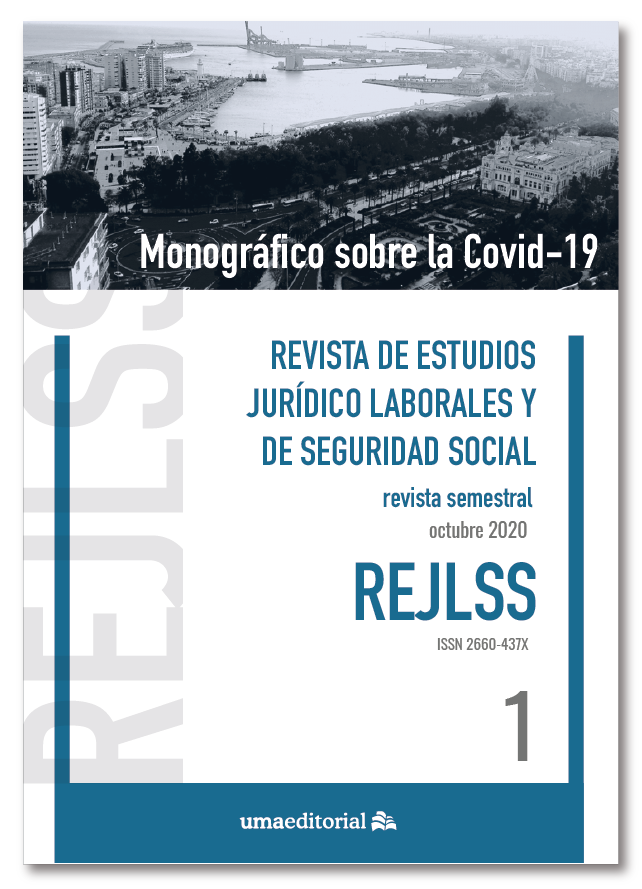The social security distribution system versus population aging
DOI:
https://doi.org/10.24310/rejlss.vi1.10438Keywords:
pension, aging, crises, taxesAbstract
The aging of the population is a demographic problem of a structural character which affects in a large or small measure all members of the European Union. In Spain, this problem will enlarge within the next 10 years with the retirement of former baby boom generation, which has put in doubt the viability of the social security economic distribution, designed in the years between 1963-1966, when the state of affairs of Spain and their protective needs were very distinct to the current existing ones.
Furthermore, with transitory character, Spain has been immersed in an economic crisis since 2006, due to the effects of the economic globalization in the financial field especially by the fall in the real estate sector caused by the disproportionate rise in the prices of this secondary sector. This fact has provoked a decline in contributors which has raised a necessary awareness in political parties that requires a sustainable modification in respect to public pension payments. From the year 2011 reforms have been introduced in relation to public pensions, so the delay in retirement age, the active aging, the regulation of the sustainability factor, the revaluation indicator and recommendation towards private social pension plans as a complement of public pensions, are aiming to secure the constitutional principle of economic sufficiency for citizens.
Downloads
Metrics
References
MONEREO PÉREZ, JC, FERNANDEZ BERNAT, JA. La sostenibilidad de las pensiones públicas; tecnos, 2014, pág 37 y ss.
SUÁREZ CORUJO,B. El sistema público de pensiones: Crisis, reforma y sostenibilidad, Lex-Nova; 2014, pág 77.
TORTUERO PLAZA; JL. “Ley 23/2013, de 23 de diciembre, reguladora del Factor de Sostenibilidad y del Índice de Revalorización del sistema de pensiones de la seguridad social: régimen jurídico, Relaciones Laborales; nº 5, 2014, pág 115.
Downloads
Published
How to Cite
Issue
Section
License
In the Revista de Estudios Juridico Laborales y de Seguridad Social (REJLSS) we are clearly committed to a policy of open access to scientific knowledge (See Berlin Declaration).
Those authors who have publications with this journal accept the following terms:
This journal provides immediate free access to its content under the principle of making research freely available to the public. All the contents published in the REJLSS are subject to the Creative Commons license
Attribution-NonCommercial-NoDerivatives 4.0 International (CC BY-NC-ND 4.0)
Copyrights are of two kinds: moral and patrimonial. Moral rights are perpetual, inalienable, non-transferable, inalienable, unattachable and imprescriptible prerogatives. In accordance with Spanish copyright legislation, the authors who publish in REJLSS retain the moral right over their work, as well as the ownership of the patrimonial right, which will be transferred to the University of Malaga for its dissemination in open access.
The patrimonial rights, refer to the benefits that are obtained by the use or disclosure of the works. REJLSS is published in open access and is exclusively authorized to perform or authorize by any means the use, distribution, dissemination, reproduction, adaptation, translation or transformation of the work.
It is the responsibility of the authors to obtain the necessary permissions of the images that are subject to copyright.
Authors whose contributions are accepted for publication in this journal retain the non-exclusive right to use their contributions for academic, research and educational purposes, including self-archiving or depositing in open access repositories of any kind.
The electronic edition of this magazine is edited by the Editorial of the University of Malaga (UmaEditorial), being necessary to cite the origin in any partial or total reproduction.
The authors may adopt other non-exclusive license agreements for the distribution of the version of the published work (eg: deposit it in an institutional telematic archive or publish it in a monographic volume) provided that the initial publication is indicated in this magazine.
Authors are allowed and recommended to disseminate their work through the Internet (eg, in institutional telematic archives or on their website) before and during the submission process, which can produce interesting exchanges and increase citations of the published work.






19.png)
